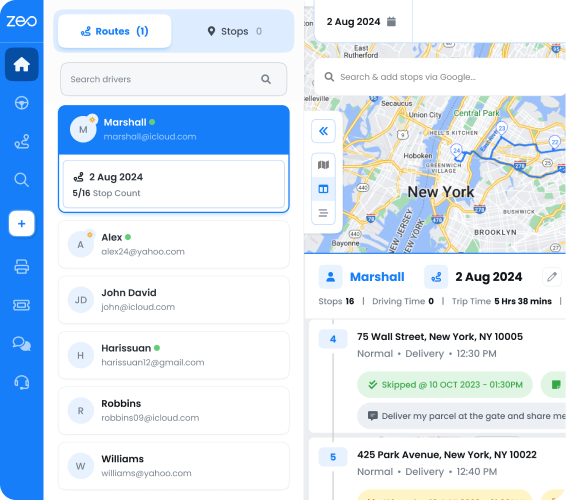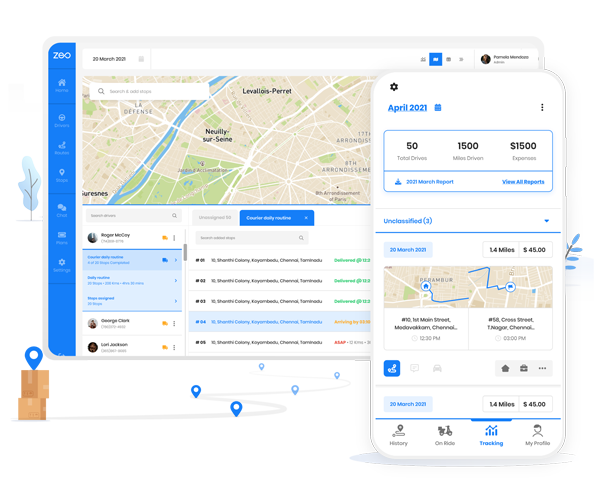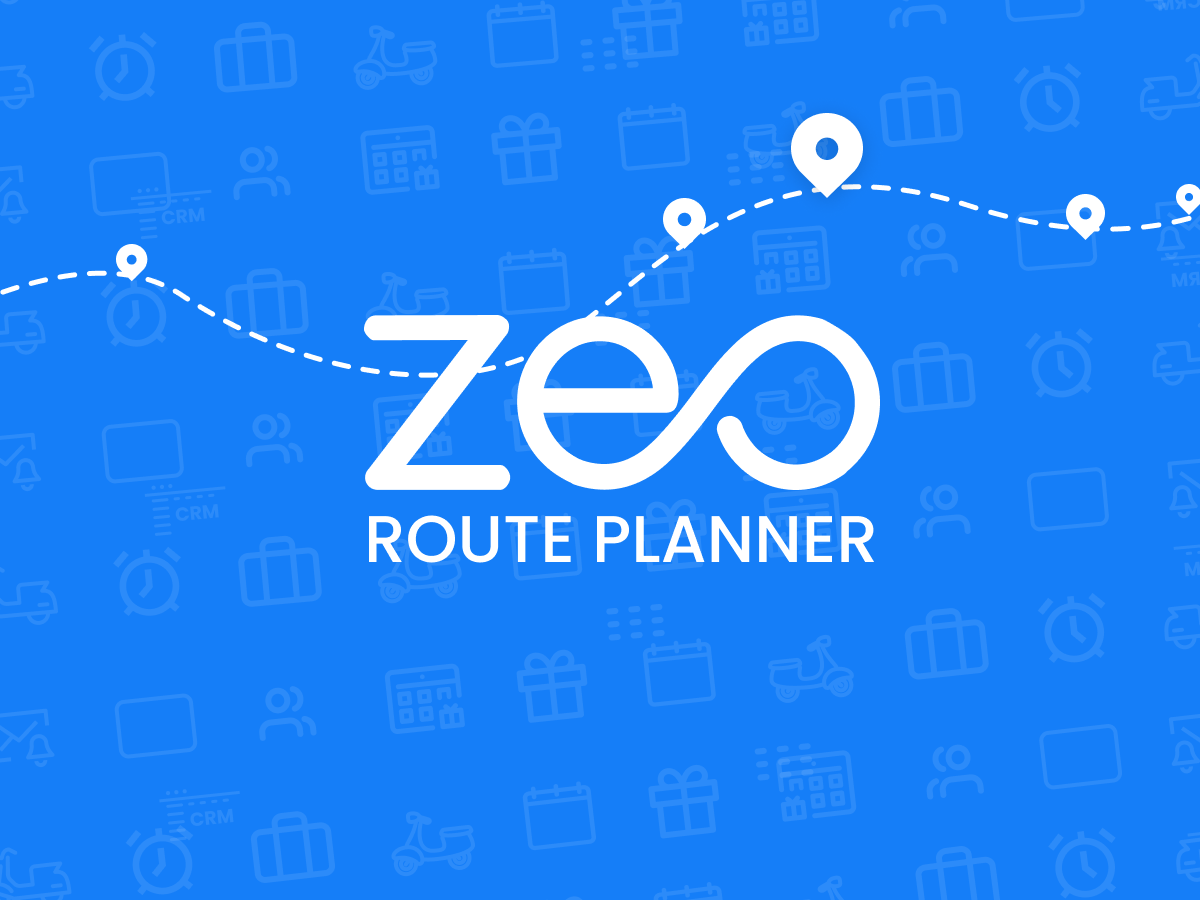When running a logistics business, a constant worry can be around wasted miles. You may come up with different ways and explore different techniques. One of those techniques is backhauling. It’s a clever fix that flips empty rides into profitable ones.
What does backhauling involve?
Well, it is about loading goods on that return journey instead of cruising back with nothing in the trailer. Around 20% of trucks in the EU roll back empty, which means missed revenue and extra fuel expenses.
That scenario has a big impact on budgets, plus it’s harsh on the environment. Carriers, shippers, and everyone in the supply chain can reap rewards with that approach.
A route planning tool like Zeo can tackle this by plotting forward and return trips together, lifting asset usage across the board. Zeo’s algorithm figures out the best path for the outbound run and loops it back for the home stretch, so those miles pay off in both directions.
What is Backhauling in Logistics and Trucking?
Many in the trucking world see empty loads as a huge drawback. A truck without cargo on the way back means wasted fuel, time, and driver hours. That’s where backhauling steps in, a strategy of loading freight on the return trip. Some treat backhauling as a simple fix, though it packs some serious perks.
Hauling goods both ways pulls in extra revenue, lowers operational costs, and shrinks the fleet’s carbon footprint. Profits look better when the same vehicle handles both the outbound trip and the homeward leg.
Drivers spend less time on the road with nothing to do. Everybody wins.
Plenty of reasons exist to embrace this practice. From a financial angle, carriers can bill for hauling goods in both directions, which boosts the bottom line. The environmental side of things looks brighter when fewer trucks are on the road, since that leads to lower emissions.
On the operational front, dispatchers get greater flexibility for scheduling and keep trucks moving rather than idling. That combination points to a well-rounded improvement for the entire fleet.
There are two major types of backhauling.
Types of Backhauling
Some fleets focus on their goods, while others connect with outside shipments. That differentiates the approach to backhauling and the potential partnerships that result.
A basic overview helps leaders decide the best path to follow.
Internal Backhauling: Companies move their cargo on the return run. Picture a grocery chain picking up fresh supplies from a central warehouse and delivering them back to local stores.
External Backhauling: A second option involves hauling freight for another business. Imagine a bakery finishing a delivery, then loading a different firm’s packages on the way back.
Knowing the difference between these two approaches can guide resource planning, cost management, and future negotiations.
Benefits of Backhauling
Hauling cargo in both directions might sound like a no-brainer, though many fleets still let trucks head home with empty trailers.
That approach squanders potential earnings and inflates operational costs. Backhauling plugs those leaks by turning ordinary runs into round-trip opportunities for profit and overall performance.
A few perks stand out.
Increased Revenue Potential
Those empty miles can translate into paid miles. Extra cargo on the return trip brings more billable shipments, which enhances overall income.
Cost Savings
The truck is already heading home, so adding a load increases fuel and driver hours. That shift drives down expenses and helps the operation run leaner.
Sustainability
Fewer trucks on the road means fewer emissions. Backhauling cuts fuel costs and boosts profits, curbs the carbon footprint, and supports eco-friendly goals.
Strategic Partnerships
Some find that carrying other companies’ freight on return trips creates new business relationships and can even spark long-term collaboration. Teamwork benefits everyone involved since costs and resources can be shared.
Leveraging Zeo for Internal & External Backhauling
Zeo Route Planner adds much clarity for fleets hoping to pull off internal and external backhauling without headaches.

increase fuel savings
Save 2 Hours on Deliveries, Everyday!
Optimize routes with our algorithm, reducing travel time and costs efficiently.
Get Started for Free
Many dispatchers struggle to arrange forward and reverse legs, especially when fresh pickups appear at the last minute. But with Zeo, that juggling act can be transformed into a smooth process.
Here’s how:
- Advanced Route Optimization
Some drivers start the day with a planned route, then discover a fresh cargo opportunity after the initial delivery. Zeo’s route planning system accounts for those changes by quickly recalculating an optimal path.A setting called I return to my start location shapes the sequence of stops, looping the route back to the origin.
Just start a new route, plug in your stops, and tick the “I return to my start location” option. The system then auto-plans the smartest round trip, factoring in both forward deliveries and return pickups so no mile goes to waste.
With that flexibility, every mile can bring in maximum benefit, whether the cargo belongs to your own company or an outside partner.
- Live Fleet Tracking & Communication
Managers want real-time visibility, and Zeo’s live tracking dashboard offers a clear look at each vehicle’s location throughout the day.
With the Zeo Live route tracking, you get insight that helps plan new pickups for return trips while drivers are still on the road, shaving off the guesswork.There are also built-in messaging features that allow dispatchers to send quick updates or instructions straight to the driver’s device.
Such two-way communication keeps everything flowing, even if a cargo arrangement shows up unexpectedly.
- Auto-Assign & Scheduling
External backhauling occasionally requires matching available vehicles with shipments from different companies.Zeo’s auto-assign tool picks the right truck based on driver schedules, shift constraints, and capacity.
With this feature, you simplify the process of slotting new cargo by using an auto-assignment feature that changes the existing route.
In cases where pickups and drops must happen in a specific sequence, Zeo’s system handles those requirements, including linked deliveries.
That approach works well for setups where one package’s delivery depends on another, like grocery goods that must arrive before a second batch can be shipped out.
All these details fit together in Zeo’s scheduling platform, leaving minimal room for confusion.
Running a fleet without empty miles is a tall order, yet Zeo offers real solutions. Better route planning, instant communication, and automated scheduling can lead to profitable backhauls.
Conclusion
Paying closer attention to backhauling can transform fleet operations. The unused capacity on the return trip might be the key to higher profits, lower emissions, and better resource management.
Zeo’s route planner will set your fleet up for success with backhauling since it makes the entire concept accessible, whether the cargo belongs to your company or an outside partner.
Trying out backhauling with a strong tool can add fresh momentum to your operation. The shift from empty miles to profitable runs rewards both the bottom line and the planet.
Ready to experience the change? Book a demo and see it yourself.

Are you a fleet owner?
Want to manage your drivers and deliveries easily?
Grow your business effortlessly with Zeo Routes Planner – optimize routes and manage multiple drivers with ease.

increase fuel savings
Hassle Free Deliveries & Pickups!
Optimize routes with our algorithm, reducing travel time and costs efficiently.
Get Started for Free
























